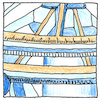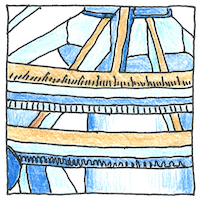Henry Hindley
metrology

|
Dividing engine
Ruler, caliper, micrometer, protractor, astrolabe, sextant, theodolite, and telescopic mount, machinists, navigators, surveyors, astronomers, and other scientists all needed finer and more accurate divisions. Henry Hindley made one of the first dividing engines based on a machine for cutting gears of a clock.
Observations by John Smeaton
On the first interview he showed me not only his general set of tools, but his engine, at that time furnished with a dividing plate, with a great variety of numbers for cutting teeth of clock wheels, &c. and also, for more nice and curious purposes, furnished with a wheel of about thirteen inches diameter, very stout and strong, and cut into 360 teeth; to which was applied an endless screw, adapted thereto.
Instruments that made instruments
Henry Hindley made watches, clocks, scientific instruments, and tools that cut brass and inscribed scales for instruments and clocks. Keeping time, cutting time into smaller intervals, cutting gears, dividing intervals by predictable movements.
Meta engines
Instead of marking gradations on each instrument manually, Henry Hindley made a dividing engine. Instead of writing another compiler, Stephen C. Johnson wrote yet another compiler compiler.



Mankind has made machines that make machines at least since the beginning of the Industrial Revolution. Thomas Carlyle argued that we have also mechanized ourselves and our society, but mechanization has not been all bad. Yacc is an example of the beauty of higher-order operations; it interprets statements in Backus-Naur Form to generate a parser for programs written in a computer language.
See also in The book of science:
Readings in wikipedia:
Other readings: